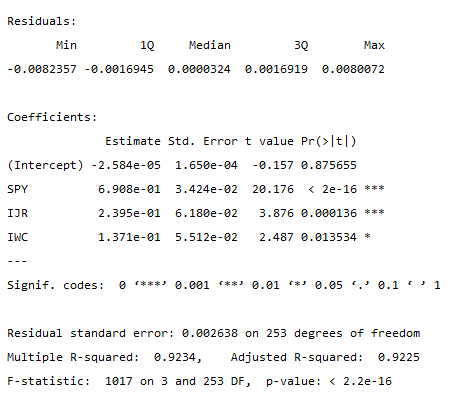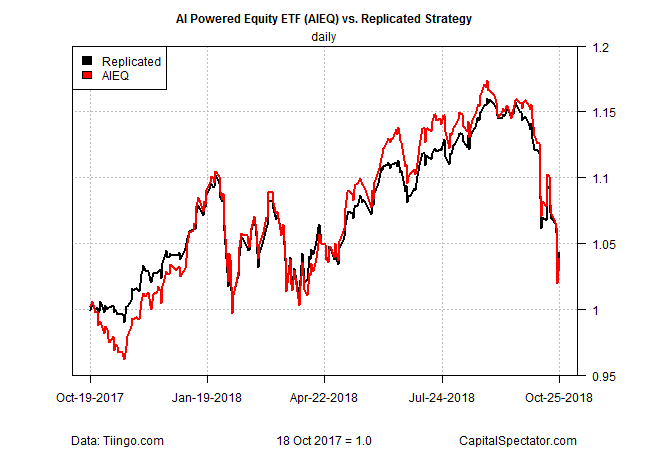Asia stocks sink as AI doubts batter tech; weak China data weighs
Bloomberg last week published an intriguing story about a new exchange traded fund (ETF) that uses artificial intelligence (AI) to outperform market indexes and active managers alike. The implication: a new era of AI-driven investing has dawned, putting the standard applications of indexing at a disadvantage. Yet a closer look at the so-called Robot ETF’s results via a factor-analysis lens tells a different story and one that can be explained with a mix of large-cap, small-cap and micro-cap equity betas. In turn, replicating the Robot ETF’s performance, which Bloomberg claims “leaves pros in the dust,” is a simple matter of holding a trio of plain-vanilla index funds.
To be fair, the Bloomberg article notes that the AI Powered Equity (AIEQ) has a healthy dose of small-cap bias. But we’re also told that the ETF uses IBM’s Watson platform, an AI system that’s deployed 24/7 to analyze “more than 6,000 US public companies each day before picking about 100 of them to own.” Impressive, but running a factor analysis on the fund suggests there’s an easier and more accessible methodology for achieving the same performance – with modestly lower risk.
As a test, let’s assume that the AIEQ’s returns can be largely explained by three equity betas, as proxied by a trio of the following conventional US stock ETFs:
- SPDR S&P 500 (NYSE:SPY): a proxy for large-cap stocks
- iShares Core S&P Small-Cap (IJR): a proxy for small-cap stocks
- iShares Russell 2000 IWM: a proxy for micro-cap stocks
The daily returns for all the ETFs are reduced by the risk-free rate, proxied by iShares Short Treasury Bond (NASDAQ:SHV), to generate risk premia. One caveat: AIEQ was launched about a year ago and so the historical results are limited. But let’s ignore that drawback and see how the data stacks up by running a multiple regression on AIEQ against the three ETFs. Here are the results:

The main takeaway: large-cap equity beta (SPY) explains most of AIEQ’s returns, with smaller but still statistically significant readings for small cap (IJR) and micro cap (IWC). Overall, the three ETFs in aggregate explain nearly all of AIEQ’s performance via a multiple R-squared reading of 0.92.
The analysis above suggests that we can closely replicate AIEQ with the three index ETFs. A formal replication project would employ reverse engineering the risk and return profile via a quantitative engine, as explained here. But as a quick test let’s guesstimate the weights for replication with a 60% weight in SPY, 30% in IJR and 10% in IWC. As the performance chart below shows, the replicated strategy tracks AIEQ closely.

As a bonus, the replicated strategy earned a slightly higher return vs. AIEQ – roughly a 4.4% annualized performance for the period in the chart above vs. AIEQ’s 3.6%. Even better, the replicated strategy’s risk (annualized volatility of daily return) was slightly lower: 13.6 vs. 15.1 for AIEQ.
Keep in mind, too, that AIEQ’s expense ratio is relatively pricey: 0.75%, according to Morningstar. SPY and IJR each charge less than 0.10% and while IWC’s is higher at 0.60%, the weighted expense ratio for the replicated strategy is still roughly 0.14%, well below AIEQ’s price tag.
Are these results surprising? Not really. A deep pool of empirical and academic research tells us that most, perhaps all active strategies can be replicated via factor analysis and low-cost index funds.
As for AI, there are surely many applications that this technology will disrupt and usher in improvements over the existing methodologies. But for the moment, it’s premature to argue that AIEQ’s secret sauce of AI is a game changer for investing vs. the standard approach via factor analysis and indexing.
